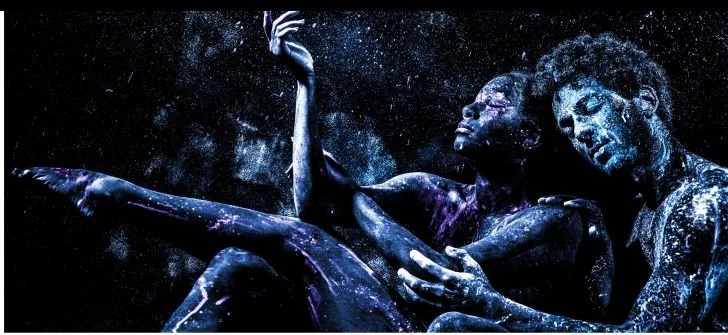Meeting the Moment: Boldly & Unapologetically
A recent NY Times article prompted me to consider the question of how leaders meet the moment when the attempt to silence their voices and narrative brazenly disregards the value of their contributions and the beauty of diversity. The systematic elimination of DEI programs and funding for cultural institutions that do not fit this federal administration’s biased views of American culture, pose great challenges for leaders at the helm of institutions of color. But still, they rise.
The Museum of the African Diaspora (MoAd) in San Francisco, is celebrating its twentieth anniversary with “UNBOUND: Art, Blackness & the Universe”—a year-long exhibit exploring the intersections of Blackness and the cosmos. Director Monetta White (pictured above left) says that they have changed their mission in order to tell the story differently. Their new mission is: “To place the contemporary art and artists of the African Diaspora at the center of the global conversation.” Chief of Curatorial Affairs and Public Programs Key Jo Lee (pictured above right) says that to meet this moment should “not be from a place of fear but from a place of fullness.” Amen. It is institutions like MoAd, with no endowment, a very modest operating budget of $7 million, and a staff of sixteen that can set the example for others across the nation.
A Sacred Space of Preparation
In the world of jazz, musicians meet their moments as a result of having been "in the shed." More than a physical space—it's a state of mind, a commitment to growth, and a sacred ritual of self-development. When musicians speak of "woodshedding" or being "in the shed," they're referring to those countless hours, months, and years spent in solitary practice, away from audiences and applause, where the foundations of mastery are laid one note at a time.
The term itself has humble origins, reportedly dating back to when musicians would literally practice in woodsheds to avoid disturbing others with their repetitive exercises and experimental sounds. These modest spaces became transformational chambers where raw talent was refined into artistic excellence.
For leaders, "the shed" embodies the understanding that leadership excellence is cultivated through intentional development—often invisible to others but essential to meaningful impact.
This dedication to practice reflects a fundamental truth that applies equally to leadership: mastery and the expression of voice isn't about perfection; it's about process. The shed is where we embrace the learning journey with both patience and intensity, understanding that development isn't linear but cumulative—sometimes arriving in breakthroughs after long plateaus, other times advancing through incremental improvements barely noticeable day to day.
Meeting the moment for a leader can require:
Clarity of vision amid uncertainty - The ability to see through the chaos and articulate what needs to happen, even when the path isn't fully clear. Leaders who meet the moment don't have all the answers, but they can frame the challenge in ways that connect with and mobilize people.
Emotional presence - Being able to acknowledge the difficulty of a situation without being consumed by it. These leaders hold space for fear, grief, or frustration while also embodying resilience and possibility.
Moral courage - Standing for what's right even when it's costly. Moments that demand leadership are often moments that test character and values.
Adaptability - Recognizing when old playbooks no longer work and having the creativity to improvise. Meeting the moment often means doing things that haven't been done before.
Playing the long game - Recognizing that cultural preservation and truth-telling are multigenerational projects. What gets planted now may bear fruit decades from today. This means thinking about institutional/organizational sustainability, succession planning, and archiving for future generations.
Holding space for joy and celebration - Resistance isn't only about fighting against erasure. Black cultural institutions also affirm life, creativity, beauty, and community. That affirmation itself is transformational.
Similar to jazz musicians, leaders like Monetta White and Key Jo Lee are also holding sacred spaces. Sustaining these cultural institutions are leaders who understand that they're not just managing organizations - they're stewarding legacies and creating containers for voices that must not be silenced.
These leaders make societal and cultural impact by meeting their moments with humanity, courage, and an unwavering commitment to something larger than themselves.


